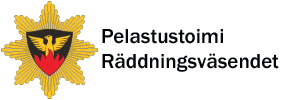

Evacuation safety
Safe evacuation - the escape route
If a fire breaks out or some other accident occurs, it must be possible for everyone in the building to escape safely, or they must be rescued by other means. The exits and escape routes must be large enough and as easy to get through as possible. This makes efficient and safe evacuation from the building possible.
Always know your location!
In an emergency, you should know two different routes for escaping safely. Check and secure your escape routes at home and in work.
A building should be like a foxhole
When designing and constructing buildings, the possibility of a fire or some other accident that makes evacuation necessary is taken into consideration. There should always be two different safe escape routes from a building, the same way as a foxhole has two exits. If one route is blocked, you can use the other one. At present, however, under certain conditions, it is possible to build buildings on a single exit without a escape route.
Make sure that the escape routes in your home are always in order. A building has a rescue plan which describes and shows the escape routes that can be used in emergencies. You should practise escaping by yourself and learn the different escape routes in advance. Be prepared and know the escape routes if something happens!
Remember to make sure that
Objects are never stored on escape and exit routes. Exits, stairwells and passages in storage rooms, attics and basements must be kept free of all objects.
Lighting and marking of escape routes
The exits and escape routes of business premises, meeting rooms, accommodation facilities and care institutions have security and signal lighting. Escape route lighting comes on when normal lights fail. The route may also be marked with paint that glows in the dark.
- Safety signs point to a safe escape route from a building and guide you to first aid firefighting equipment or a fire alarm button. Safety signs should be as visible as possible from all directions. The newest safety signs are photoluminescent, and they can also be seen in the dark.
- A green exit sign points the way to the exit and the escape route. Escape routes are marked with green exit signs, with an arrow which indicates the escape direction. A green light above the door shows the nearest exit door. Exit signs must always be lit.
- Red and white fire safety signs lead you to the fire alarm button or firefighting equipment, which include a fire extinguisher, first aid firefighting equipment and a fire hydrant.
In addition, the emergency access roads to the building should be kept clear and in a serviceable condition.


